
The coal-fired biomass hot air furnace for compound fertilizer plant is mainly used to provide a stable heat source for the compound fertilizer dryer. Its working principle is to release heat by burning anthracite and biomass particles, generate high-temperature hot air and then send it to the dryer through a high-temperature blower. The thermal efficiency is usually 70%~80%, and the hot air temperature can be adjusted between 200~500 degrees according to the different formulas of compound fertilizer production. In Africa like zambia, zimbabwe, kenya, tanzania, Algeria, Nigeria, due to the high calorific value and low price of anthracite, this coal-fired hot air furnace is widely used in Africa. Tongli has exported more than 20 coal-fired hot air furnaces and used in fertilizer plants in Africa. In terms of structure, the coal-fired biomass dual-purpose heat separation consists of a chain grate, a furnace, an induced draft fan, a coal feeder, and a dust removal chamber. The structural design focuses on high temperature resistance and wear resistance. The furnace lining is made of high-aluminum refractory materials, and the service life can reach 3~5 years. At the same time, since it is a direct-fired hot air furnace, in order to prevent soot from entering the dryer and affecting the color of the compound fertilizer, it is equipped with a 3-level dust removal chamber to ensure the whiteness of the compound fertilizer.
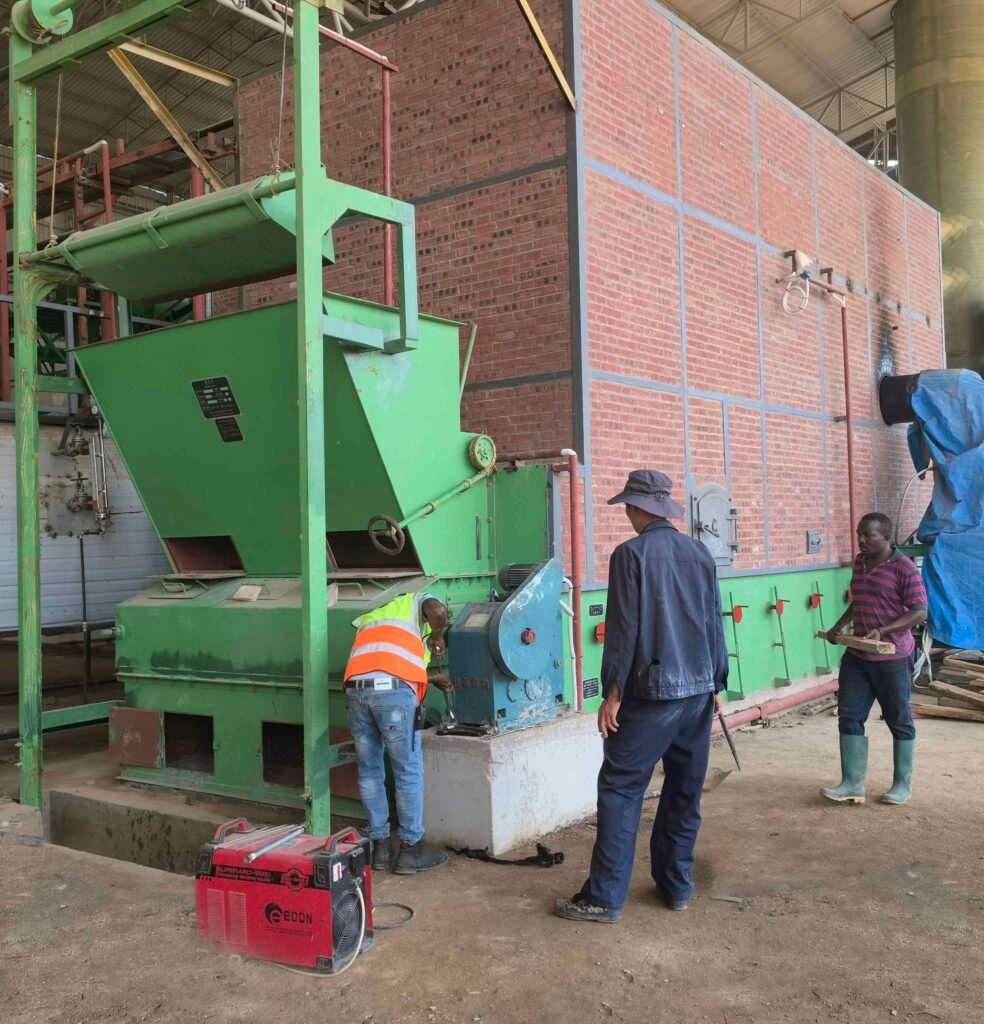
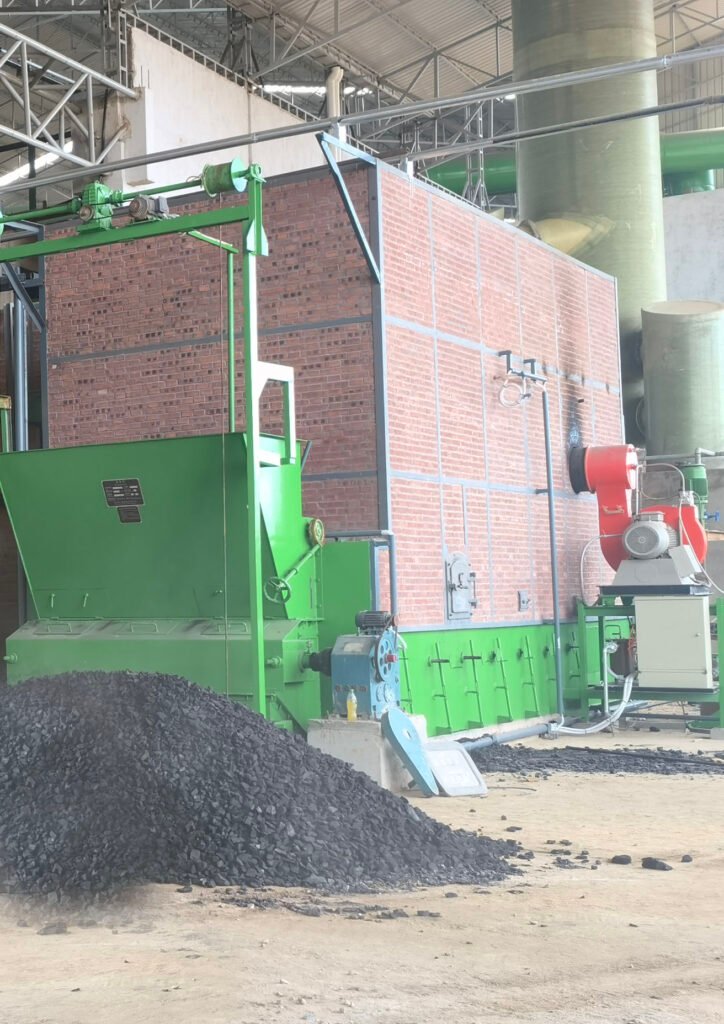
Efficient Coal-fired hot air stove Solution
Where High-Efficiency Combustion Meets Industrial Innovation!
Tongli coal-fired hot air furnace has a heat exchanger isolation design to ensure the whiteness of fertilizer; the combustion chamber uses high-temperature refractory materials to improve combustion efficiency and equipment life; the outlet air temperature is adjustable, with a flexible range of 100°C to 500°C to meet a variety of process requirements.
The heat exchanger isolation design used in coal-fired and biomass-fired hot blast furnaces. The inner layer is made of high-aluminum refractory bricks or silicon carbide bricks. This type of refractory material has a refractoriness of up to 1770℃ - 1790℃ and can withstand long-term erosion of high-temperature flue gas; the middle layer is filled with high-efficiency insulation wool, such as rock wool or ceramic fiber wool, with a thermal conductivity as low as 0.03 - 0.04W/(m・K); the outer side of the insulation wool is covered with aluminum silicate plates, which have good flexibility and tear resistance to prevent the insulation wool from shifting; the outermost layer is built with red bricks or installed with a steel plate shell.
During the combustion process, the fuel feed rate and combustion-supporting air volume can be adjusted in real time according to different production process requirements. For example, when producing high-nitrogen fertilizers, the temperature needs to be controlled at 100-180°C. The equipment reduces the grate speed and combustion-supporting air volume to slow down the combustion intensity and reduce the generation of hot air. In the case of drying organic fertilizers, the fuel input and air volume are increased to enhance the combustion efficiency. At the same time, the built-in temperature sensor and feedback system of the equipment can monitor and correct the outlet temperature with an accuracy of ±2°C.
The combustion chamber is made of high temperature resistant materials. The combustion chamber is the core area where fuel combustion releases high temperature. During the combustion of coal or biomass, the temperature can reach 1000℃ - 1400℃, or even higher. Ordinary materials can hardly withstand such a harsh high temperature environment. Therefore, the combustion chamber of the hot blast furnace uses high-alumina bricks, silicon carbide bricks and other high-temperature resistant materials. Taking high-alumina bricks as an example, their alumina content is above 48%, the refractoriness is as high as 1770-1790℃, and the load softening temperature is between 1300-1500℃. The third-grade high-alumina bricks are used on the furnace roof, the first-grade high-alumina bricks are used on the furnace wall, and the furnace arch is made of refractory castables.
| Model | Output (kcal) | Airflow (m³/h) | Output Temperature (°C) | Gas Consumption (m³/h) |
| ZJTL 0.1 | 10 x 10^4 | 1500 ~ 560 | 60 ~ 200 | 8 ~ 15 |
| ZJTL 0.2 | 20 x 10^4 | 3500 ~ 930 | 60 ~ 200 | 10 ~ 25 |
| ZJTL 0.5 | 30 x 10^4 | 5600 ~ 1480 | 60 ~ 200 | 15 ~ 40 |
| ZJTL 0.7 | 40 x 10^4 | 12000 ~ 2160 | 60 ~ 250 | 15 ~ 55 |
| ZJTL 1 | 60 x 10^4 | 25000 ~ 4330 | 60 ~ 250 | 20 ~ 75 |
| ZJTL 2 | 120 x 10^4 | 28000 ~ 5600 | 60 ~ 250 | 30 ~ 150 |
| ZJTL 3.2 | 200 x 10^4 | 45000 ~ 8660 | 60 ~ 250 | 50 ~ 245 |
| ZJTL 4 | 240 x 10^4 | 83000 ~ 12500 | 60 ~ 350 | 65 ~ 275 |
| ZJTL 5 | 300 x 10^4 | 134400 ~ 23000 | 60 ~ 350 | 80 ~ 355 |
| ZJTL 6 | 360 x 10^4 | 170000 ~ 28000 | 60 ~ 350 | 110 ~ 425 |
| ZJTL 8.3 | 500 x 10^4 | 250000 ~ 433000 | 60 ~ 350 | 150 ~ 600 |
| ZJTL 10 | 600 x 10^4 | 320000 ~ 572000 | 60 ~ 351 | 200 ~ 700 |
The coal is fed into the combustion chamber and ignited by the burner. The combustion chamber is usually made of high-temperature resistant materials to withstand high temperatures of 800°C to 1000°C. The high-temperature flue gas generated by coal combustion is the heat source of the entire hot air furnace system.
The high-temperature flue gas enters the heat exchanger, and the function of the heat exchanger is to transfer the heat in the flue gas to the external air, while ensuring that the flue gas and the air are not in direct contact to avoid pollution. Commonly used heat exchanger materials are corrosion-resistant and high-temperature resistant metal materials. The external air enters the heat exchanger through the blower, and absorbs heat and heats up rapidly through contact with the surface of the heat exchanger.
The heated air reaches the required temperature and is sent to the user end. The outlet air temperature can be adjusted according to production needs, usually between 100°C and 300°C. The flue gas after combustion is discharged through the flue gas exhaust system. The exhaust system is usually equipped with multi-stage dust removal equipment and desulfurization equipment to reduce the emission of particulate matter and sulfur dioxide in the flue gas, in line with environmental protection standards. Coal-fired hot air furnaces can be equipped with an automated control system to monitor parameters such as combustion temperature, outlet air temperature, and coal supply in real time. The system automatically adjusts the coal supply and fan speed according to the set temperature to maintain a stable outlet air temperature.
Using coal with appropriate calorific value and low sulfur content can improve combustion efficiency and reduce pollution emissions. Good combustion chamber design and reasonable coal supply system ensure that coal is fully burned and reduce energy waste caused by incomplete combustion. Ensure that there is sufficient oxygen supply during the combustion process and control the amount of air required for combustion. Too much or too little air will lead to incomplete combustion, thereby reducing efficiency. Regularly cleaning the ash and dirt on the heat exchanger can maintain its heat exchange effect and avoid ash accumulation affecting heat transfer efficiency.
Adjust the hot air temperature according to actual needs to avoid unnecessary high temperature output and reduce energy waste. Efficient dust removal devices can reduce the impact of emissions on the environment, while reducing the accumulation of dust on the equipment and maintaining efficient operation of the equipment. The automation system monitors parameters such as temperature, air volume, and coal supply in real time, and intelligently adjusts the combustion process to make the hot air furnace operate in the best condition. Replace damaged parts in time to avoid downtime caused by equipment failure, thereby improving production efficiency.
Check the combustion condition of the coal-fired furnace to ensure that the fuel is fully burned and the flame is normal. If incomplete combustion or unstable combustion is found, it is necessary to adjust the air-coal ratio or clean the combustion chamber in time. Regularly check whether the hot air outlet temperature is within the set range to prevent it from being too high or too low to affect the performance of the equipment. Keep the flue gas channel unobstructed to prevent ash accumulation and blockage.
Clean dust and smoke regularly to ensure smooth exhaust. The surface of the heat exchanger is prone to ash accumulation and should be cleaned regularly to maintain good heat exchange efficiency. Regularly check the refractory bricks, insulation materials and other vulnerable parts in the furnace. If damaged, they should be replaced or repaired in time. Clean the dust collector regularly to ensure the efficiency of the dust collector to reduce air pollution and equipment wear. Regularly add lubricating oil to moving parts such as fan bearings to reduce friction and wear. Regularly check the sensitivity and accuracy of the safety valve and pressure gauge to ensure that they are in good working condition. Establish detailed maintenance and care records, record the content of each inspection and maintenance, the problems found and the measures taken. Through the above daily and regular maintenance measures, the service life of the coal-fired hot air furnace can be effectively extended, the failure rate can be reduced and the operating efficiency can be improved.
In the agricultural field, biomass fuel hot air furnaces are often used for drying grains, cereals, seeds, etc. By providing stable hot air, it can effectively reduce the risk of grain quality loss and mildew and improve the storage life.
In the chemical industry, biomass fuel hot air furnaces are used in the drying process of various materials, such as fertilizers, chemical raw materials, and pharmaceuticals. Hot air can accelerate the speed of chemical reactions and drying efficiency, and is suitable for drying processes that require constant temperature control.
biomass fuel fired hot air furnaces are widely used in drying processes in the building materials industry, such as the drying of gypsum boards, ceramics, bricks and tiles and other materials. Through rapid and uniform heating, the quality and strength of building materials are ensured.
In the field of wood processing, biomass fuel hot air furnaces are used for drying and humidification of wood. Hot air can reduce the moisture content of wood and prevent deformation and cracking of wood during processing and use.
In the textile industry, biomass fuel hot air furnaces are used for preheating, drying and shaping of textiles. It provides a stable source of hot air to improve production efficiency and the quality of textiles.
In the field of food processing, biomass fuel hot air furnaces can be used to dry dehydrated vegetables, preserved fruits, tea leaves, etc. Hot air furnaces can provide clean, pollution-free heat sources to ensure the hygiene and quality of food.
In the mining and metallurgical industries, biomass fuel hot air furnaces are used to dry ores, coal powder, metal powders, etc. High-temperature hot air can effectively improve the drying speed and production efficiency of materials.
1. Problem manifestations: unstable flame, high black smoke, high coal consumption, and low thermal efficiency.
Causes: poor quality of coal, too large or too wet coal particles; inappropriate air-to-coal ratio; insufficient or excessive air intake.
Solution: Use coal of appropriate quality and control the humidity of coal; adjust the air-to-coal ratio and air intake to ensure sufficient combustion.
2. Problem manifestations: reduced heat exchange efficiency, reduced air outlet temperature, and ash accumulation in the furnace.
Cause: high ash content of coal, incomplete combustion, and poor smoke exhaust.
Solution: Clean the ash accumulation in the furnace and flue regularly, use low-ash coal, and ensure that the smoke exhaust system is unobstructed.
3. Problem manifestation: The air outlet temperature fluctuates greatly and is difficult to stabilize at the set value.
Cause: Fluctuation in coal quality, untimely adjustment of air intake or air-coal ratio, and failure of the automatic control system.
Solution: Ensure the stability of coal quality, calibrate the temperature control system regularly, and check the operation of the automatic control system.
4. Problem manifestation: Severe corrosion of components such as the furnace body, flue, and heat exchanger, resulting in air and water leakage.
Cause: The sulfur content in coal is high, and the acidic substances in the exhaust gas cause corrosion; the temperature in the furnace is too high or too low, causing thermal stress.
Solution: Use low-sulfur coal and install desulfurization equipment; regularly check and maintain easily corroded parts and replace them when necessary.
High humidity environment may cause coal to absorb moisture during storage and transportation, increase the humidity of the fuel, and thus reduce combustion efficiency. During the combustion process, coal with higher humidity will produce more water vapor, which will dilute the combustion gases, reduce thermal efficiency, and increase the moisture content in the flue gas, which may cause equipment corrosion and ash accumulation. The ambient temperature also affects the operation of coal-fired hot blast furnaces.
Under low temperature conditions, the temperature of the coal and air is low, and the combustion may be incomplete, producing more unburned particulate matter and harmful gases. In addition, low temperatures may also affect the thermal insulation performance of the furnace body and increase heat loss. High temperature conditions may accelerate material fatigue of the hot blast furnace or cause other heat-related problems. Long-term climate change, such as global warming, may affect the storage conditions and combustion efficiency of coal. For example, climate warming may accelerate the oxidation of coal and affect its calorific value.
Coal-fired hot air furnace is a thermal energy device that uses coal as fuel and produces high-temperature hot air through combustion. Its working principle is as follows: coal enters the furnace through the feed port, and is burned in layers on the grate or suspended in the fluidized bed. The combustion intensity is controlled by adjusting the air intake, and the high-temperature flue gas generated reaches 800~1200℃. Cold air is sent in by the blower, flows through the combustion chamber, and is heated to the set temperature of 150~500℃ before being output. The exhaust gas generated by combustion is discharged after environmental protection treatment such as dust removal and desulfurization. The thermal efficiency is between 75% and 90% depending on the type of coal and fuel.
Bituminous coal and anthracite are the first choice for coal-fired hot blast furnace fuel, followed by lignite.
1. Bituminous coal: It is the most commonly used type, with a volatile content of generally 10%~35%, a calorific value of about 20~30 MJ/kg, a long flame and good thermal stability during combustion. For example, lean coal (volatile content 10%~20%) is suitable for scenes with moderate combustion speed requirements, while gas coal (volatile content 25%~35%) is suitable for hot blast furnaces that require rapid heating due to its high volatility and easy ignition.
2. Anthracite: The volatile content is less than 10%, the calorific value can reach 25~32 MJ/kg, and the sulfur content is usually less than 1%. There is less smoke and pollution during combustion, but it is difficult to ignite. It requires strong ventilation and a high-temperature furnace. It is suitable for systems with high environmental protection requirements and controllable furnace temperature.
3. Lignite: The volatile matter is as high as 30%~45%, but the calorific value is low (10~21 MJ/kg), and the water content is high (20%~30%). It needs to be pre-dried before combustion to improve efficiency. It is often used in small hot air furnaces or those with low calorific value requirements. It has low cost but attention should be paid to slagging problems.
The thermal efficiency of coal-fired hot air generators is usually between 60% and 95%. In simple direct coal-fired hot air generators, the high-temperature combustion gas obtained after the fuel combustion reaction is further in contact with the outside air, mixed to a certain temperature and directly enters the drying room or baking room. This method has a relatively low thermal efficiency, generally between 60% and 75%. For example, some small hot air furnaces used for simple drying of grains, seeds, etc. have a relatively simple structure and combustion method, and their thermal efficiency is in this range. The indirect coal-fired hot air generator that uses high-efficiency combustion technology and high-quality heat exchangers can achieve a thermal efficiency of 85% to 95%. Large coal-fired hot air furnaces used for compound fertilizer drying optimize the combustion chamber design to allow the fuel to burn fully.
The combustion of coal releases a large amount of carbon dioxide. Usually, for every kilogram of coal burned, about 2.5 kilograms of carbon dioxide will be produced, while the carbon dioxide produced by the combustion of natural gas is only 50%-60% of that of coal. In addition, coal contains impurities such as sulfur, which will generate sulfur dioxide when burned. For every ton of coal with a sulfur content of 1%, about 20 kilograms of sulfur dioxide will be produced, which can easily lead to environmental problems such as acid rain. In comparison, the amount of sulfur dioxide emitted by oil-fired hot blast furnaces is relatively low, while gas-fired hot blast furnaces produce very little sulfur dioxide due to the extremely low sulfur content of natural gas. At the same time, the coal-burning process will also produce a large amount of smoke and dust, and its particle emission concentration is far higher than that of gas and oil-fired hot blast furnaces. The hot blast furnace using biomass fuel as the heat source achieves "zero" carbon dioxide emissions, low NOx emissions, actual sulfur dioxide emissions of 32 mg per cubic meter, and smoke and dust particle emissions of less than 10 mg per cubic meter. Among all types of fuels, its emission indicators have obvious advantages.
In the compound fertilizer production scenario, the biomass and coal co-combustion technology can achieve the dual value of "heating + solid waste treatment", which is especially suitable for compound fertilizer drying process with coal-fired hot air furnace as heat source. Compound fertilizer production requires high-temperature hot air (about 300~600℃) to dry materials, and the thermal efficiency of traditional coal-fired hot air furnace is about 75%~85%. After crushing (particle size <5mm), biomass (such as agricultural straw, sawdust, rice husk, etc.) can be mixed and burned with coal powder (particle size <200 mesh) in a ratio of 1:9~3:7. Its volatile matter (70%+) can increase the flame propagation speed, increase the outlet temperature of the hot air furnace by 10~30℃, and increase the thermal efficiency by 3%~5%. Tanzania's 500,000-ton annual compound fertilizer plant mixes coal with 20% corn stalks (calorific value of about 15MJ/kg), reducing the energy consumption per ton of fertilizer from 80kg standard coal to 72kg standard coal, saving about 4,000 tons of coal annually and reducing CO₂ emissions by about 10%. The sulfur content of biomass (0.1%~0.3%) is much lower than that of coal (0.5%~2.0%), and mixing 20% biomass can reduce SO₂ emission concentration from 400mg/m³ to below 300mg/m³; at the same time, the chlorine element (0.1%~0.5%) in biomass can promote NOₓ reduction, reducing NOₓ emission concentration by 15%~20%, and reducing the subsequent desulfurization and denitrification load.
During the operation of the lump coal burning hot blast furnace, the combustion system should be ensured to be safe and stable. The combustion speed of lump coal is relatively slow, and it is necessary to reasonably control the air-coal ratio (generally controlled at 1:1.5~1:2.5) to ensure full combustion and avoid the accumulation of combustible gases such as carbon monoxide. The furnace temperature should be stably controlled at 700℃~950℃ to prevent excessive temperature from causing refractory spalling or overheating of metal structures. In order to prevent the furnace from backfire under positive pressure, the blower and the induced draft fan must be started according to the program interlock to ensure that the furnace is always in a slightly negative pressure state (generally -30Pa to -80Pa). The system should be equipped with an online monitor for CO and O₂ concentrations. When the CO concentration exceeds the safety limit of 50 ppm, it should automatically interlock and shut down and force ventilation. The slag should be cleaned regularly to prevent the accumulated slag from blocking the air duct or causing the furnace bottom to burn through. The smoke exhaust system needs to be equipped with high-efficiency dust removal equipment to make the particle emission concentration ≤30mg/m³. Operators need to be equipped with protective equipment, conduct regular safety inspections and risk identification training, and be proficient in combustion regulation, temperature control management and accident handling procedures to ensure the inherent safety of the hot air furnace system.
1. In the combustion part, a horizontal cyclone burning chamber is set in the furnace. The high-temperature flue gas is burned twice in the burning chamber and dusted once, which greatly improves the combustion efficiency and reduces the smoke particles. The combustion efficiency reaches more than 95%.
2. The grate is equipped with an air equalization device, which is sensitive to wind adjustment, uniform air distribution, and low carbon content in ash.
3. The furnace combustion chamber outlet is equipped with a temperature control device, which is convenient for hot air temperature adjustment, adjustable less than 930℃, and the temperature stability of continuous hot air supply is ±5℃.
4. The degree of automation is high and the operation is convenient. The coal feeder adopts vertical lifting, the grate adopts variable frequency speed regulation, and the temperature and hot air volume can be automatically adjusted.
5. The equipment is highly safe, without explosion hazard, low operating cost and simple maintenance.
6. The hot air has high cleanliness and dust content of 80-200mg/Nm³
7. All hot air enters the drying equipment, and the production process does not increase emissions
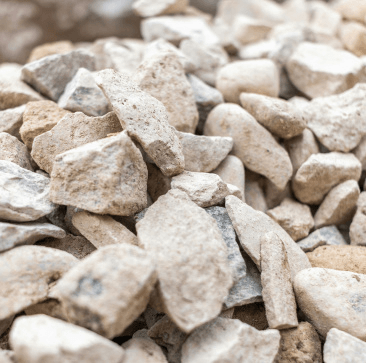
A common industrial fuel with high calorific value and moderate moisture. Offers stable combustion and good heat output.

High-carbon, low-smoke coal that burns clean and hot. Ideal for applications needing consistent high temperatures.
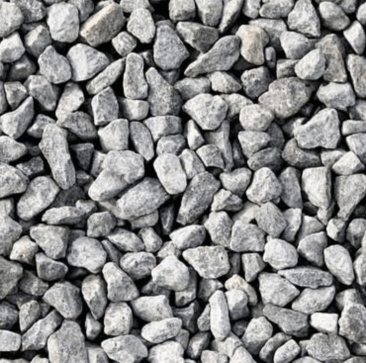
Low-grade coal with high moisture content. Economical but requires drying or moisture control for efficient use.
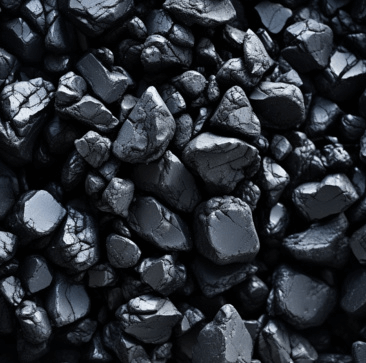
Made from sawdust or wood waste, these pellets are clean-burning, energy-dense, and produce low ash.

Agricultural waste compressed into pellets. Affordable, with moderate energy and higher ash content.

By-product of sugarcane processing. Renewable, cost-effective fuel with moderate heating value.
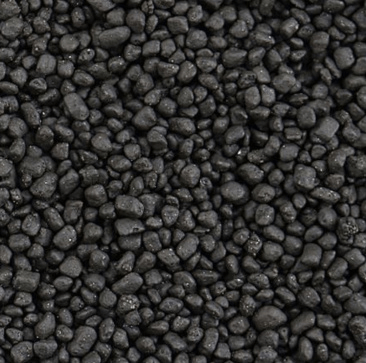
Dry, high-energy pellets made from agricultural waste. Burn efficiently and are widely available in farming regions.
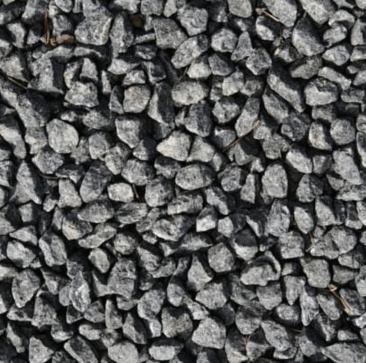
Dense biomass with high calorific value. Suitable for high-efficiency combustion and widely used in tropical regions.
You can get in touch with us through the following contact information
AddressNo. 2289 Huancheng South Road, Tongxiang, Jiaxing, Zhejiang Province, China. Zip code:314500
Please fill in the sales inquiry form and our sales representatives will be in touch shortly.